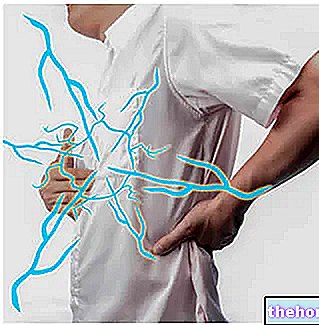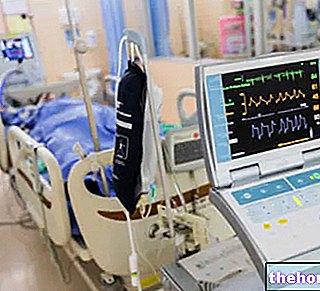Hip pain when walking can occur for many reasons and at any age. Depending on the type of pain and the precise area in which it occurs, different contrast strategies can be devised.
,Arthritis
Arthritis can cause hip pain at any age.
Several researches show that professional athletes who practice impact sports are more likely to develop forms of hip and knee arthritis in the future, because one of the causes is precisely due to old trauma or injuries.
In people over the age of 60, hip pain when walking is typically due to arthritis in or around the joint.
There are several types of arthritis that can cause hip pain when walking:
- Juvenile idiopathic, common in children;
- Osteoarthritis, due to wear and tear on the joints;
- Rheumatoid arthritis, an autoimmune disease affecting the joints
- Ankylosing spondylitis, which primarily affects the spine
- Psoriatic arthritis, which affects the joints and skin
- Septic arthritis, caused by an "infection in the" joint.
Injuries, damage, inflammation and disease
Injury or damage to the hip joint can cause pain when walking. An injury to the hip and connecting areas, such as the knee, can damage or trigger inflammation of the bones, ligaments, or tendons of the joint.
Muscle or tendon conditions
These are the muscular or tendon conditions most responsible for hip pain.
- Bursitis: Caused by inflammation of the fluid-filled pads around the hip joint.
- Sprain or strain: Conditions that occur due to overuse of the muscles and ligaments in the hips and legs.
- Tendonitis: A condition caused by damage to the tendons that connect the hip muscles to the bones.
- Toxic synovitis: An inflammatory condition in the joint that causes hip pain in children.
- Inguinal hernia: weakness or tear in the lower stomach wall.
Bone conditions
The bone problems that can cause hip pain are these.
- Fractured or broken hip.
- Dislocation: Occurs when the upper leg bone partially or completely slips out of the joint.
- Osteoporosis: a condition common especially in the elderly, causing weak or brittle bones in the hip and other areas.
- Osteomyelitis: bone infection in or around the hip.
- Bone cancer.
- Leukemia.
- Legg-Calve-Perthes disease: Occurs in children where the femur is not getting enough blood.
- Avascular necrosis or osteonecrosis.
Nerve problems or damage
Nerve problems in or near the hip joint can also cause pain when walking, especially if they are pinched or damaged in the back.
- Sciatica: pinched nerve in the lower back.
- Sacroiliitis: nerve damage due to inflammation where the spine joins the pelvis bone.
- Meralgia paresthetica: irritation of the nerves in the outer part of the thigh, which may be due to obesity, tight clothing or exercise.
Other causes of hip pain while walking
The way you walk can also trigger hip pain over time, as well as muscle weakness in the hips, legs or knees.
Flat feet and knee injuries also affect.
targeted can greatly improve the situation.The most useful exercises to strengthen the hip and knee joints are those that improve core, back and abdomen strength, as they help keep the hip balanced when walking and running.
It is also important to strengthen the hamstrings and quadriceps muscles.
However, if, after a few days of persistent pain, the situation does not improve, it is necessary to consult a doctor who evaluates the opportunity or not to undertake a drug treatment or to carry out specific tests to trace the cause of the disorder.
There are targeted exercises to strengthen the hips and counteract the pain. Exercises for tight hip flexors are also excellent.
Training weak ankles with specific exercises is also helpful.
and stand upright when you have hip pain.
- Wear comfortable shoes that support your feet.
- Wear loose, comfortable clothing, especially around the waist and legs.
- If you also have problems with your knees or feet, use shoe insoles.
- Avoid walking or standing on hard surfaces for long periods.
- Raise your desk or workspace to avoid assuming a bad posture when working.
- Use a walking stick if it can help reduce hip pain.
- Limit the ascent and descent of the stairs.
- Sit on a comfortable but firm pillow or support that supports your hips.
- Avoid hard surfaces like a wooden chair or bench, but also too soft surfaces like a sofa or bed.




























